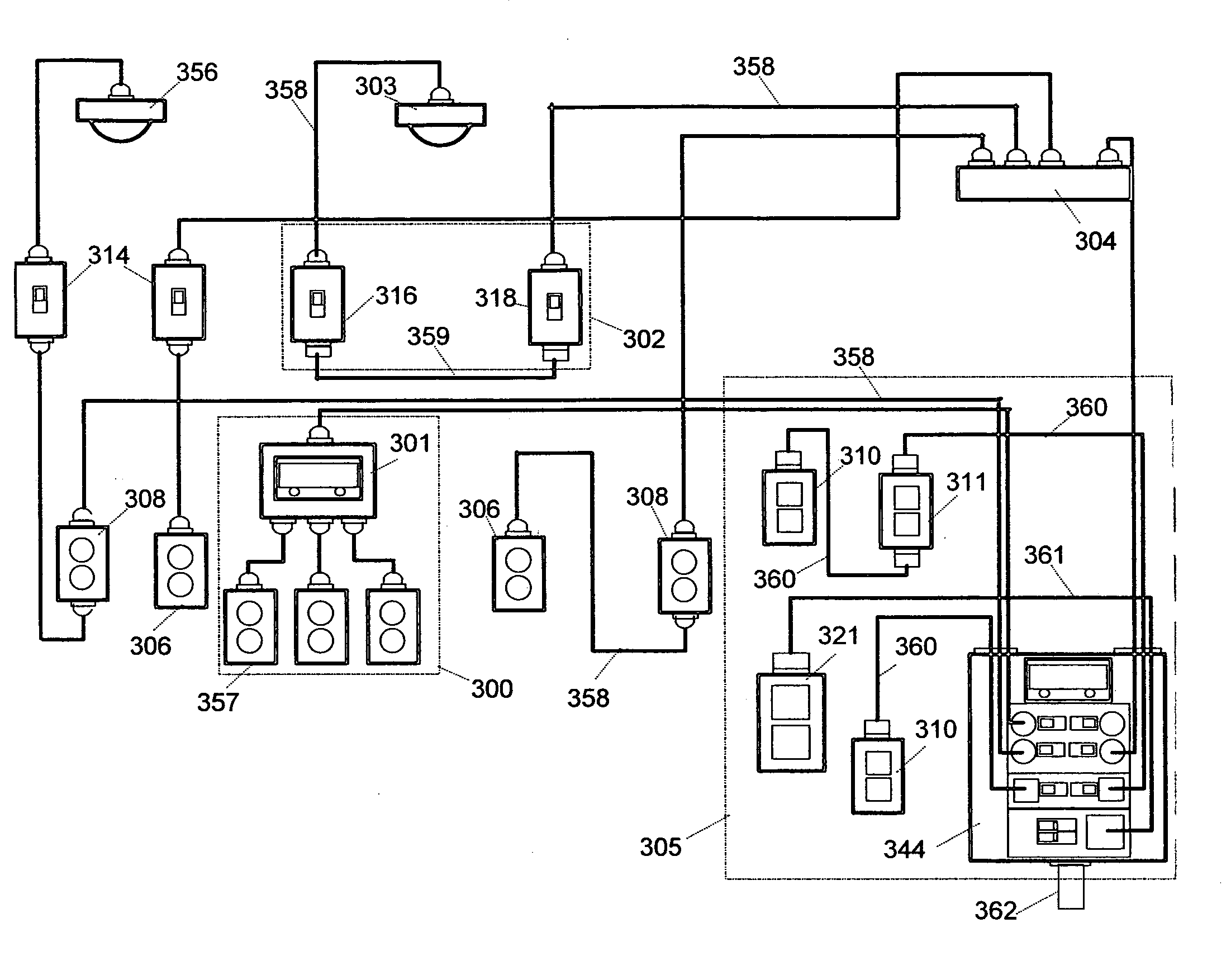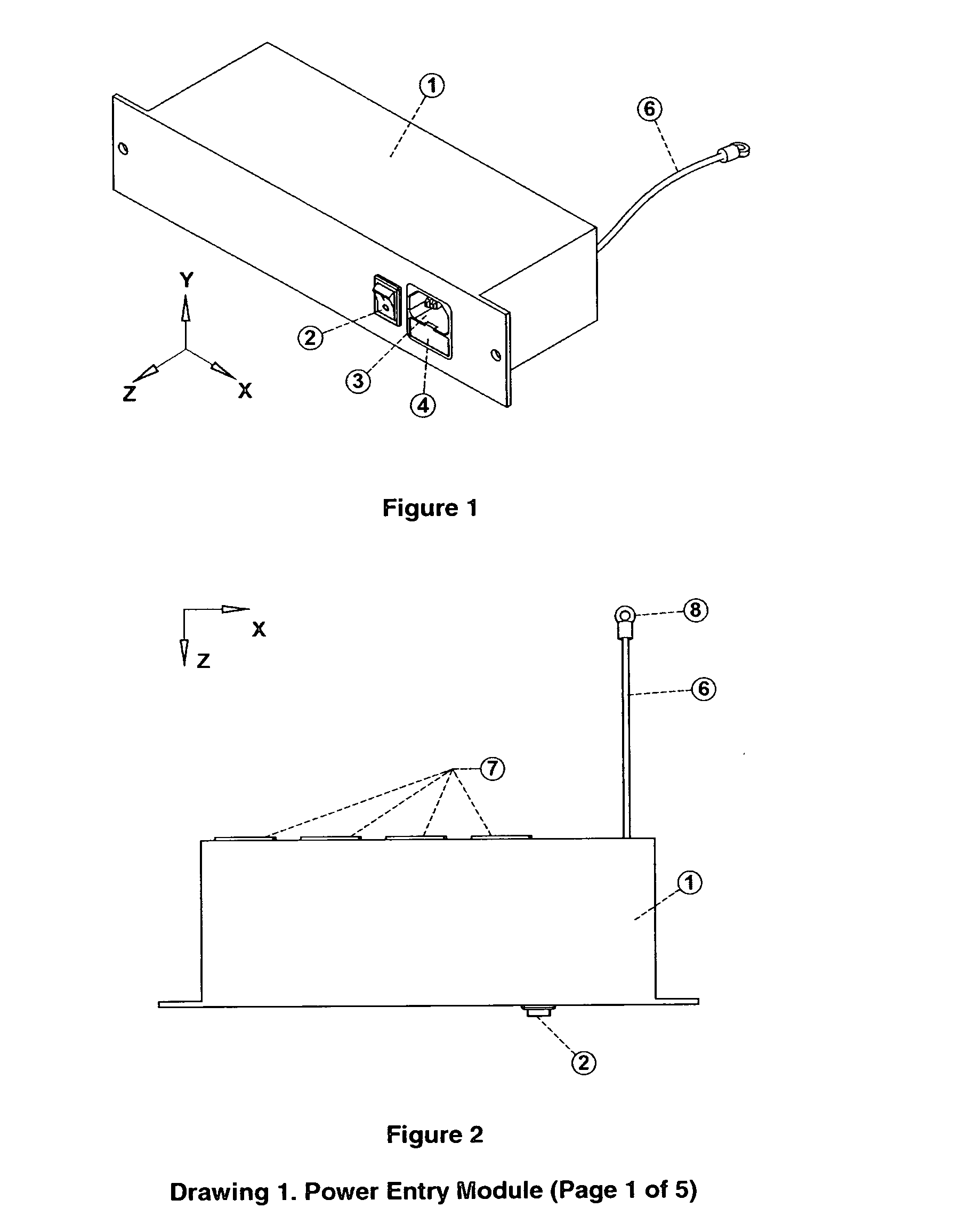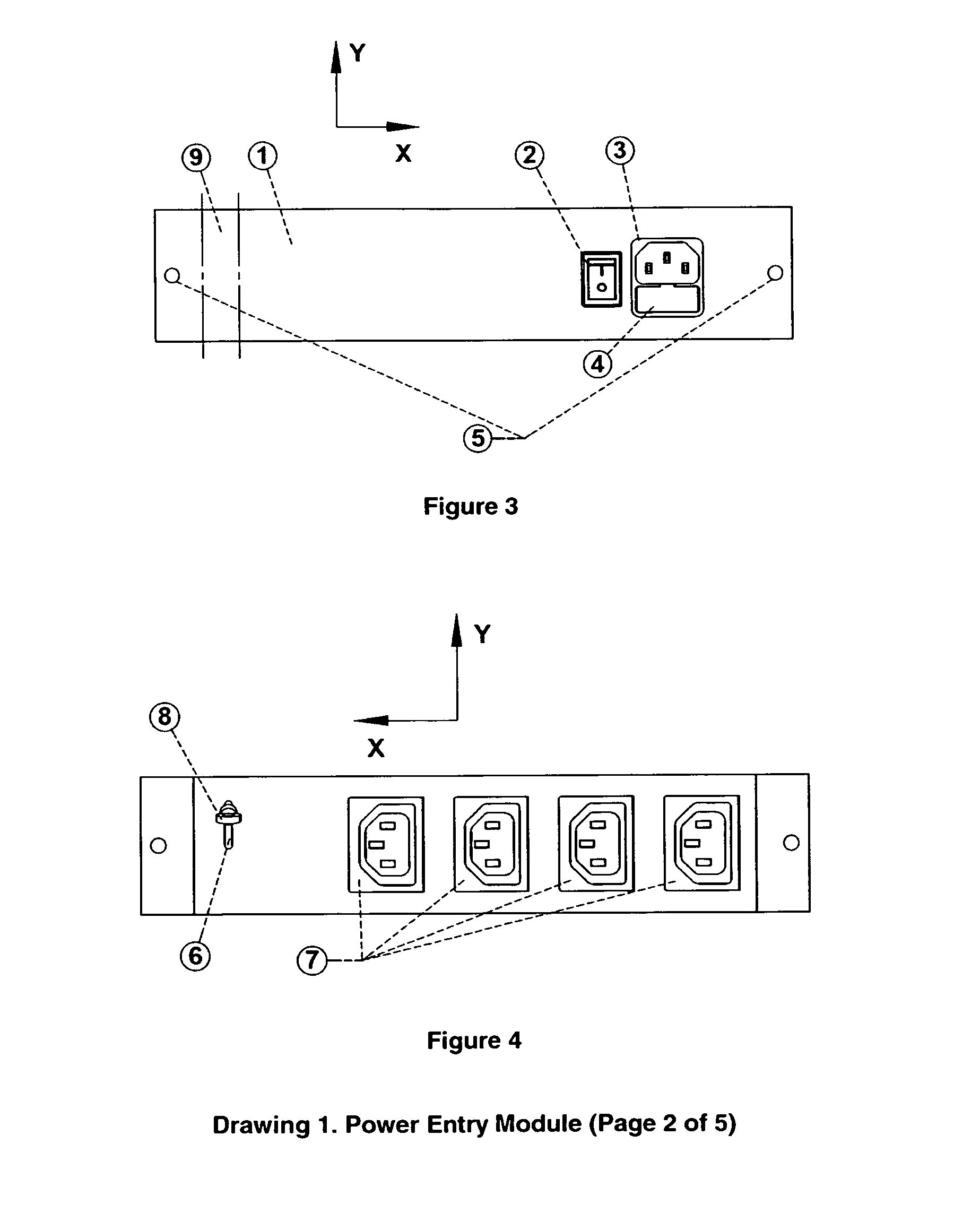Modular power distribution and control system
a power distribution and control system technology, applied in the direction of connection contact material, coupling device connection, instruments, etc., can solve the problems of increasing labor costs, increasing the associated cost of electrical power wiring of a structure, and a rather intensive schedule of completion of installation quality, so as to minimize electromagnetic emissions, ensure quality, and ensure the effect of quality
- Summary
- Abstract
- Description
- Claims
- Application Information
AI Technical Summary
Benefits of technology
Problems solved by technology
Method used
Image
Examples
Embodiment Construction
Notes:
[0117]1) For simplicity, the examples of Systems, Devices, Modules and components within them, presented in document “Drawings”, are for illustration purposes of respective principals. The actual design, layout and arrangement—could be changed to meet requirements of a specific application. Although the main intent of this application is to standardize respective principals of AC power entry, distribution and control within Structures and machines, and as a result, provide off-the-shelf cost effective solutions, still—customization of various elements could be accomplished within outlined principals, to further optimize the results for any given application, while retaining the essence of Plug-n-Play, Plug-n-Power and Power-n-Safety features.
2) For simplicity, optional features, such as: component shielding, grounding, strain-relief, environmental seals, etc. are not shown on all drawings
Drawing 1
5 Pages
[0118]Drawing 1 illustrates various packaging configurations of Entry Modu...
PUM
| Property | Measurement | Unit |
|---|---|---|
| voltage | aaaaa | aaaaa |
| electromagnetic compatibility | aaaaa | aaaaa |
| voltage | aaaaa | aaaaa |
Abstract
Description
Claims
Application Information
 Login to View More
Login to View More - R&D
- Intellectual Property
- Life Sciences
- Materials
- Tech Scout
- Unparalleled Data Quality
- Higher Quality Content
- 60% Fewer Hallucinations
Browse by: Latest US Patents, China's latest patents, Technical Efficacy Thesaurus, Application Domain, Technology Topic, Popular Technical Reports.
© 2025 PatSnap. All rights reserved.Legal|Privacy policy|Modern Slavery Act Transparency Statement|Sitemap|About US| Contact US: help@patsnap.com



